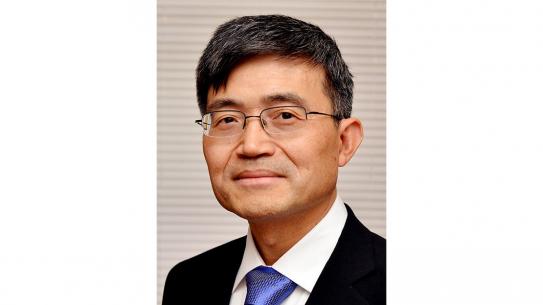NYU Tandon professors team up to explore complex urban systems

Each issue of the European Physical Journal Special Topics is focused on a specific subject, with particular emphasis placed upon interdisciplinary topics in physics and related fields. With experts predicting that more than two-thirds of the world’s population will be living in cities by 2050, complex urban systems constitute an area ripe for exploration.
In 2022, Kurt Becker, the Vice Dean for Research, Innovation and Entrepreneurship at NYU Tandon; Juan Pablo Bello, the outgoing director of the school’s Center for Urban Science and Progress (CUSP); and Maurizio Porfiri, an NYU Tandon Institute Professor and incoming director of CUSP, approached the journal with the idea of devoting an issue to that ever-evolving field.
Rapid urbanization, they pointed out, poses numerous challenges, including transporting people and goods efficiently, ensuring reliable electrical power and water, considering the health and wellness needs of populations that include older adults and people with disabilities, preparing for the waves of migration expected in the wake of climate change, and building an accessible and inclusive environment. None of those challenges can be addressed in isolation, they explained, since urban environments represent complex, intertwined socioeconomic-technical-environmental systems that require cross-disciplinary scientific and technological approaches — just the type of approaches they and their colleagues were taking at Tandon and elsewhere.
The publisher readily agreed — Becker was well-known as a member of the journal’s editorial board, and Porfiri had previously edited a special-topic issue on dynamical systems in the animal world — and the three subsequently curated a collection of 12 peer-reviewed articles, half of which were authored or co-authored by Tandon faculty or doctoral students.
These include:
- Becker’s “Research Universities, Incubators of (Urban) Innovation,” describes how institutions like Tandon have built a vibrant and nurturing culture that supports the innovation and entrepreneurship that can lead to solutions to the challenges facing cities, from charging electric vehicles and managing energy use in large buildings to eliminating food waste.
- With visiting Ph.D. student Francesco Surano and faculty member Alessandro Rizzo, Porfiri presents a spatio-temporal analysis of 1.3 million pieces of Twitter data about COVID-19 lockdowns and isolates the mechanisms underlying the acceptance of public health interventions by different segments of the population in “Analysis of Lockdown Perception in the United States during the COVID-19 Pandemic,” and in a second article, “Quantifying the Role of the COVID-19 Pandemic in the 2020 US Presidential Election,” examines the ramifications of the crisis on voting behavior.
- Ph.D. student Callie Clark — an NSF Graduate Research Fellow who came to Tandon from the University of California, Berkeley, and who will be joining Professor Constantine Kontokosta’s Urban Intelligence Lab — co-authored “A Network Spatial Analysis Simulating Response Times to Call for Service at Variable Staffing Levels,” which describes the spatial analysis she and her fellow researchers conducted to determine the impact a reduced police force may have on response time — a salient concern given recent calls by some activists to defund the police.
- Professor of Civil and Urban Engineering Debra Laefer, who is also a CUSP faculty member, was co-author of “Managing Wind Resource Variation for Rooftop Turbine Placement,” which suggests ways to improve the generally poor performance of most roof-integrated wind turbines (RIWTs).
- Stanislav Sobolevsky, industry professor and director of the Urban Complexity Lab at CUSP, was a co-author of “Ridership Prediction and Anomaly Detection in Transportation Hubs: An Application to New York City,” which stresses the importance of accurate traffic prediction and early surge detection to the design of efficient public transit dispatch systems.
Science and technology are key in meeting the complex urban challenges of the present and future, Becker, Porfiri, and Bello say, and the research presented in the European Physical Journal Special Topics issue on complex urban systems proves just how true that is.




